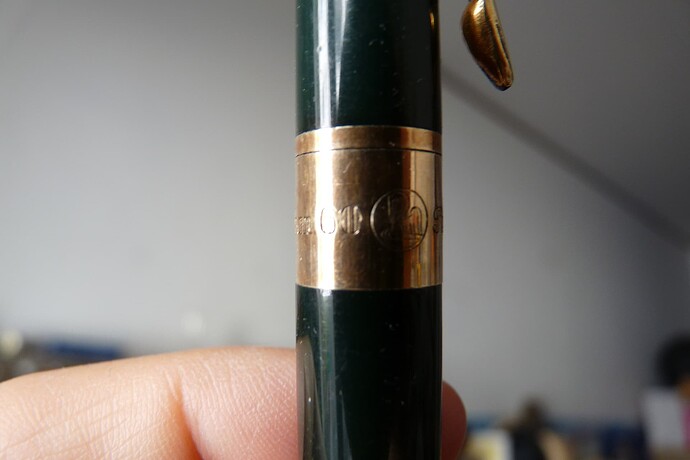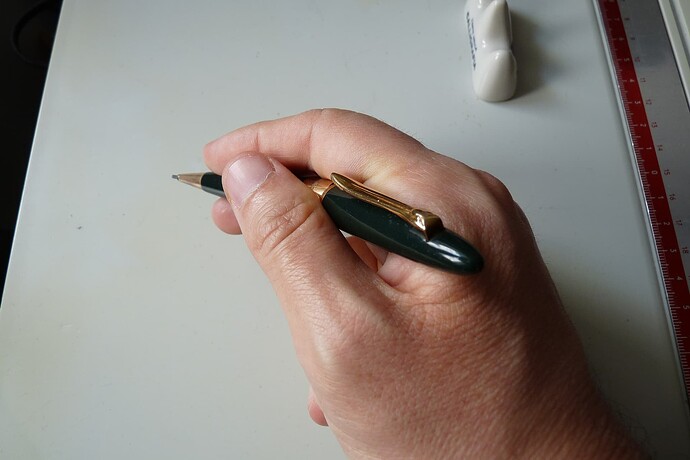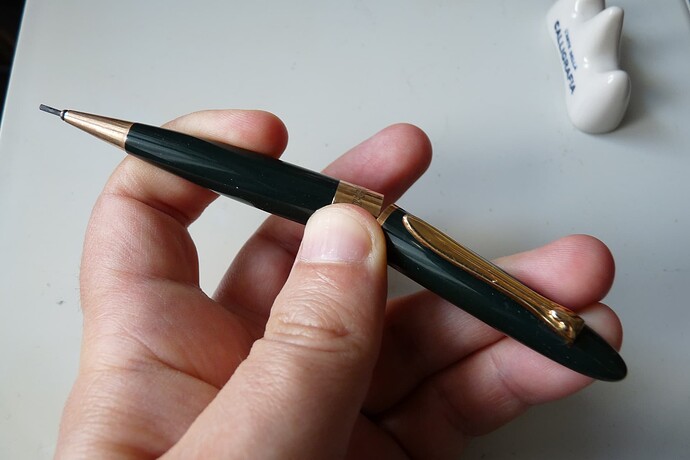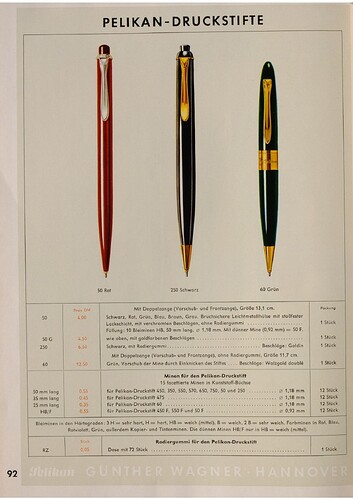On this board I’ve found many interesting discussions about body-knock pencils [post edited by correcting any instance of “side-knock” with “body-knock”, Ed.], their quirk mechanisms, and the unusual approach to the lead feed they can offer. I got so interested in the topic that I ultimately decided to pull the trigger on a vintage, shiny chrome rOtring 900 when the opportunity and the price felt both right to me (thank you Vinted! ![]() ).
).
While the mechanism and its operation still seem totally absurd to me — “why in the world should I try to break the pencil in order to dispense the lead?” remains one of the craziest questions I ask myself anytime I play with such an MP — over time I learned to appreciate the ingenuity and the cleverness of the internals, and the delicate interplay between different parts of the object working together to do the most natural thing for a knock pencil, yet in the most unnatural way possible.
Here, however, I’m about to climb the family tree of body-knock MP’s a few steps, and talk about an old relative of these oddities: the unusual Pelikan 60 «Knickebein».
The body is probably made of bakelite, dyed/produced in a green shade which makes the streamlined, “torpedo-like” form factor even cooler; the two main parts of the barrel are separated by two brass rings (one being significantly wider than the other), with the addition of two more brass parts (pocket clip and mouth/tip) which really complement the overall structure.
This is a relatively small pencil — 12 cm in length, or 4 and 3/4 in, with a diameter of 1.1 cm — but the feeling in the hand is nothing less than exquisite; the materials are delightful, the weight and balance are definitely spot on, the 1.18 lead diameter is wonderfully vintage, but leaves an interesting mark on the page. I’m even tolerating the pocket clip, which really says something about the level of respect I’ve grown towards this item.
On the brass ring, one can read the tag “Pelikan 60” (repeated twice), accompanied by the typical pelican logo, and the “60” is written in an uncommon double-stroke script, making it even more interesting. The following picure tries (unsuccessfully) to capture the aura of this inscription — the “0” can be seen clearly, while the “6” has been blinded by a ray of light bouncing precisely where it was not meant to be.
I’s a very nice pocket pencil from the remote past (I can’t really put a date on the item, even if I assume something around 1940’s–1960’s), and it would be a great writing implement on its own, even without any “magic” happening to its body. I’m sure, however, that everyone still reading this post wants to know about the body-knock trick.
Well, there’s basically one thing I can say about it, and that is: it’s good.
It’s exactly as good as you’d imagine a vintage contraption designed to operate in this way to perform: the spring keeping every part together is tight as if it had just been sent out of the assembly line, and while the body is bent it operates by pressing on a disk releasing the clamps which hold the lead in place, and making the core advance 2-3 mm. A tiny mechanical marvel, quite different from the “cone” responsible for e.g. the operation in the rOtring 900.
Every time I test the body-knock motion I apply great care, for obvious reasons, but the response is robust and rock-solid, even more than what is achieved by much more modern pencils. Just like an old rotary phone, this pencil delivers no matter what, and does so gently, gracefully, and without any hesitation.
I’ve tried to capture the essence of the body-knock trick by taking two pictures: the first shows the knock action “live”, with the hand in the position expected to trigger the mechanism, whereas the second just shows how far the bending can go, and has nothing to do with an actual writing configuration. From the white line on the end of my thumb, you can imagine how much force must be exerted to take the pencil to its limits.
(I was in a bit of a hurry, and decided not to disassemble the pencil to show the internals, also because my camera is not that good at macro pictures, but I’ll try to provide more shots in a future post.)
I found this pencil in real life, for once, at a local Pen Show here in Trieste at the beginning of May; it was sitting quietly among many fountain pens and other ephemera, sold by an Italian specialist dealing mostly in nibs and fountain pens. Purchasing this item proved to be not really cheap, the negotiation was tough but very respectful, yet in the end the final figure I paid was still around 20% cheaper than the price tag on another Pelikan 60 currently available on Ebay (which sports an ad imprint diminishing the aura of the deep green bakelite).
So, what are the final thoughts after all this journey? I still think body-knock pencils are generally weird, but the level of alienation is greatly washed away when it comes to the Pelikan 60: given its overall attitude, the trick becomes just one of many unusual features it comes equipped with — a fun one, to say the least — and this green gem was ultimately able to make me come to terms with this tangential way of dispensing lead. ![]()
PS: for the Knockology webmasters: I tried to add the “Pelikan” tag to this thread upon creating it, without success; apparently, I can only add the optional tags already present elsewhere — but how could they get on the drop-down menu? — so, if you can, please complete this thread by applying the relevant tag. ![]()




